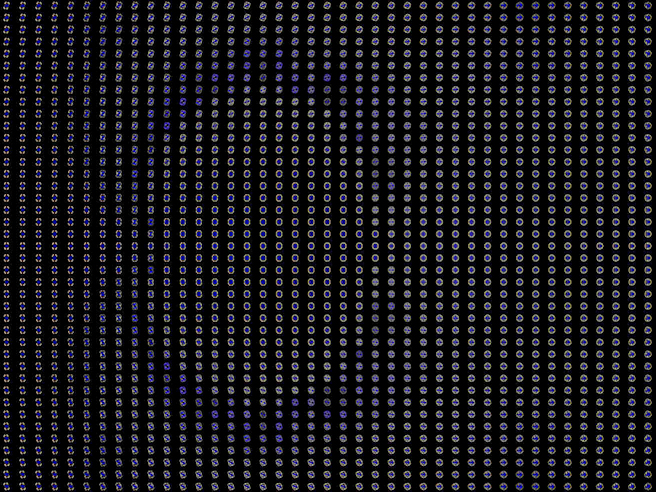hpdz.net
High-Precision Deep Zoom
Julia Set Maps
Introduction
This page has samples of and links to large maps of the Julia sets for several fractals. These maps are a tiny image of the Julia set that exists at each point in the complex number plane. For brief conceptual background on what a Julia set is, see the next section, or to see the maps, skip to the Map Page Links section, below.
Julia Sets
Julia sets are obtained by iterating a function, just like most other kinds of fractals. The points that are in the Julia set for a function f(z) are obtained by repeating this operation:
z0 = any point in the complex number plane (that is, the point corresponding to the pixel in the image)
z1 = f(z0)
z2 = f(z1)
etc.
The points in the complex number plane that are in the Julia set are those where z remains bounded (i.e. does not grow infinitely large) as this process is repeated an infinite number of times.
Julia sets can be fractals, or they can be simple closed shapes with a non-fractal boundary. The fractals can be solid shapes with an interior, or they can be what mathematicians call a "Fatou dust" -- a collection of points that are not connected to each other. This is similar to the "Cantor dust" obtained by removing points from a line, plane, or volume in an iterative way. The end result is a set with no interior, just a bunch of isolated points, or, to use the mathematical term, they are "nowhere dense".
One of the easiest functions to study is the quadratic f(z) = z2+c. Choose a constant value c, and for each point in the complex number plane, iterate:
z0 = any point in the complex number plane
z1 = z02 + c
z2 = z12 + c
etc.
With this function, we get the cardioid-shaped Mandelbrot set that is so famous. There is an intimate, deep connection between Julia sets and Mandelbrot sets. More on that below.
Computing a Julia Set
Practially, to carry out this process on a computer and make images, the iteration is repeated until either a specified limit on the number of iterations is reached (say, 100), and then the point is said to be in the Julia set, or until zn exceeds some specified magnitude, and then the number of iterations is then used to select a color for the point in the image that was used as the starting value of the process.
Relationship to Mandelbrot Sets
Each point in a Julia set image corresponds to a point in the complex number plane that is the starting value of the iteration sequence. This differs from the way the Mandelbrot set types of fractal images are generated. Mandelbrot-type fractal images are generated by iterating the same function, but initializing things differently:
c = point in complex number plane (the coordinates of each pixel in the image)
z0 = 0
z1 = f(z0) + c
z2 = f(z1) + c
etc.
The point c is in the Mandelbrot set if the value of z remains bounded as this process is repeated.
It turns out that the Mandelbrot set for a function f(z) is the set of all points where the Julia set is connected. Points not in the Mandelbrot set for f(z) have Julia sets that are a Fatou dust, a set of disconnected points that is nowhere dense. So the Mandelbrot set is a kind of directory of the Julia sets for a function.
The boundary of the Mandelbrot set has structures that resemble the Julia set in that neighborhood.
Map Page Links
The images below are links to pages wtih hundreds of tiny thumbnail images of Julia sets arranged in a grid that corresponds to the complex number plane. Each thumbnail is the Julia set at that point in the complex number plane.
Click on an image to go to the large page.
Important Details
These pages have enormous tables and lots of HTML to download, and they each load 441 thumbnails. So it may take a few moments for the page to render in your browser once you click on a link. The formatting has been chosen so these pages will fit in a browser window on a 1600x1200 monitor.
Less Important Details
The style sheet for the site had to be updated with changes needed to make these pages work, and browsers cache style sheets. The table that holds the images is designed so all the images are touching, with no borders and no space around them. If you don't see that, try try refreshing your browser cache. Another sign that the browser is using the cached copy of the stylesheet is if the design at the top of the page is repeating, rather than left justified and fading to black at the right.
The table below shows how to force a reload of a page and all linked documents like stylesheets. This has to be a "super-reload" to ensure the stylesheet is reloaded.
| Internet Explorer | Ctrl-F5 | |
| FireFox | Ctrl-F5 or Ctrl-Shift-R | Cmd-F5 |
| Google Chrome | Ctrl-F5 | |
| Safari | Ctrl-R | Cmd-R |
You may also note the menu and/or image table is or is not centered, depending on which browser you are using. IE seems particularly bad at following instructions, and I am tired of fighting with it. The proper CSS formatting for centering the top menu and the tables has been applied, and Firefox, Chrome, and Safari display these pages correctly.
Quadratic Mandelbrot Set
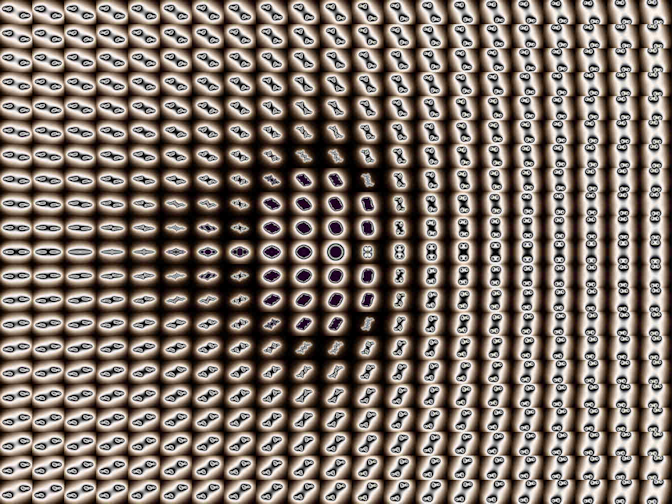
Cubic Mandelbrot Set
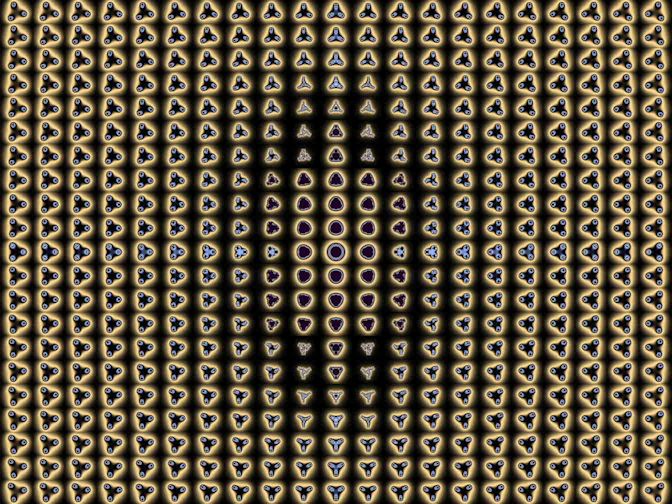
Burning Ship
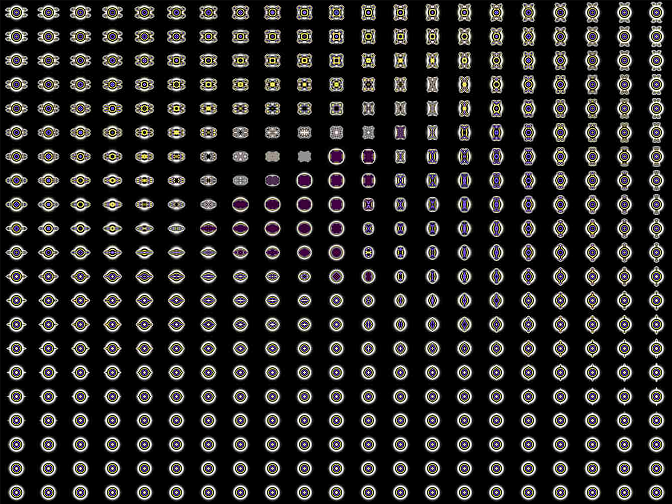
Magnet Type 1
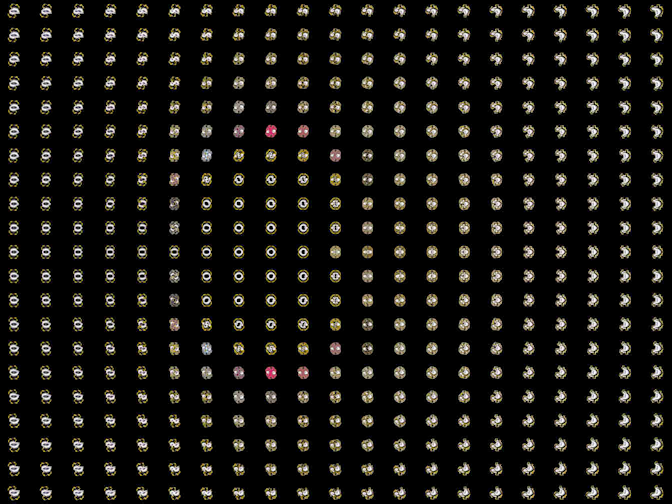
Magnet Type 2
Unlike the above, this is a little over the top, a 41x41 montage of 1280x960 images. A ZIP file with all of them is available. Click on the overview image below to view the main page for this.
